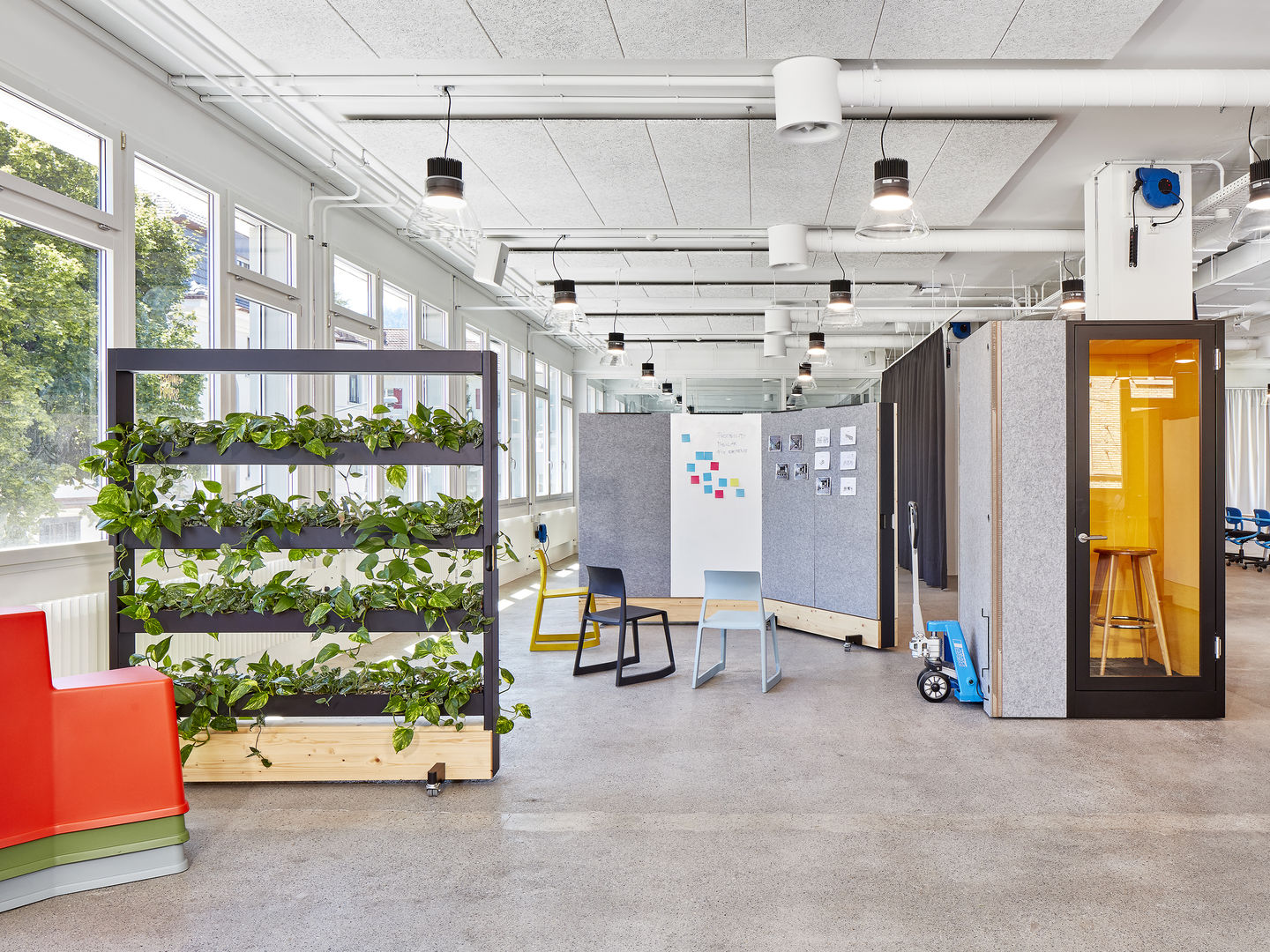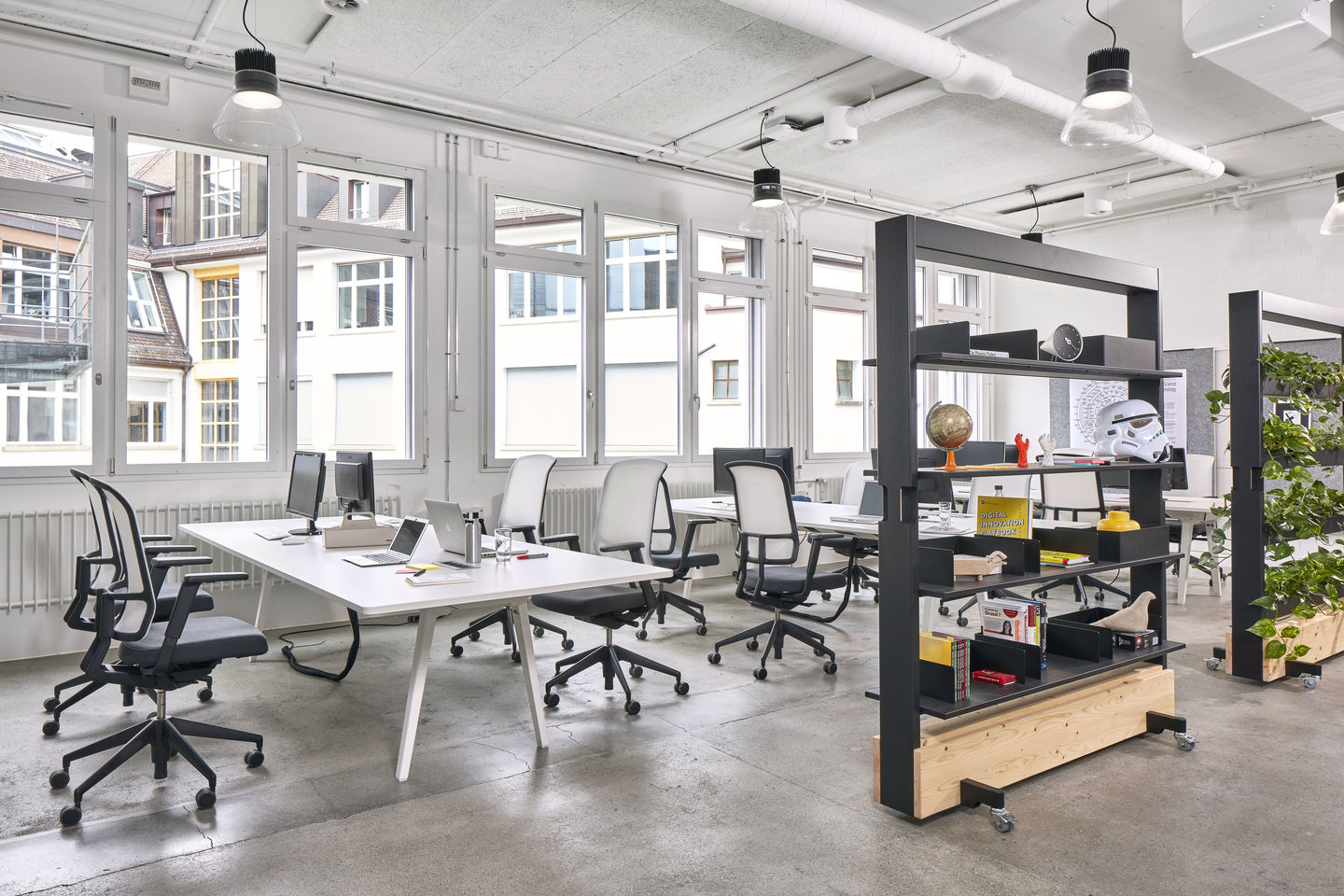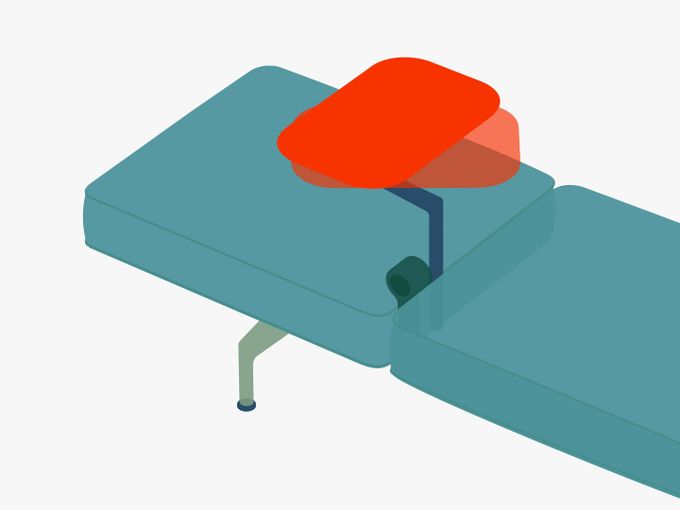"The Physical Office Creates a Sense of Identity"
Interview with Pirjo Kiefer

As head of Vitra’s Interior Design Services, Pirjo Kiefer and her team help companies design their workplaces. Even prior to Covid-19, she took a keen interest in the radical changes taking place in the world of work on the back of factors like digitalisation and globalisation. What concerns are planners focused on in the current crisis? A conversation.
At the moment, Vitra’s Interior Design Services team is very much focused on practicalities, as people are slowly moving back into the office. Both at Vitra and in your work for clients, your team is helping adapt offices to current hygiene and distancing provisions. What are the key considerations here?
You would be forgiven for thinking that this is mainly a matter of removing office furniture like chairs and tables to increase the distance between staff. However, the job is actually far more involved than that, which makes it a fascinating challenge. The question is how to get employees to observe distancing rules and comply with regulations. If you just post warning signs all over the place, it makes everyone uneasy and they end up feeling patronised, but by the same token we all know how quickly people can forget to apply precautionary measures. So it’s a balancing act. We have noticed that existing pieces of furniture – like the chairs in a conference room – can also be used as natural distancers if you put signs on them saying they shouldn’t be used. In other words, it’s all about empathy and thinking ahead in planning terms.

Are there particular office typologies that lend themselves more easily to adaptation?
We have certainly made some interesting discoveries in that regard: for one thing, the more open and flexible an office design is, the more efficient you can be about implementing an appropriate response to Covid-19. At the moment, many people are predicting an end to open-plan offices, but it doesn’t actually matter how the space is structured. What is true, though, is that offices where the possibility for change was part of the original design now have a clear advantage – Stephan Hürlemann’s Dancing Office and Sevil Peach’s Citizen Office spring to mind here. Individual or even double offices provide much less scope for flexible capacity planning. All you can do there is downsize them to one single person who ends up being just as isolated as in their home office. So why come in to work in the first place?

Yes, quite. Why come to the office at all? We’re hearing that a lot at the moment from people who’ve been working from home and have realised that they can do their job just as effectively. What’s your take on that?
A study conducted by digital association Bitkom reveals that one in two professionals in Germany have had their first experience of working from home during the current crisis: this has speeded up many digitalisation processes, which means that home office technology is now up and running. Researchers at Stanford University also showed that staff were more productive at home and that, on average, they actually felt better about themselves and their performance. That said, there are a lot of people who want to get back to the office. Why’s that? Even before the crisis we knew that 80 percent of the ideas that are truly innovative come out of direct, personal communication. This is also one of the findings in a study carried out by the Massachusetts Institute of Technology (MIT). As far as the present situation is concerned, this means that digital technologies have helped boost efficiency, enabling people to manage and implement projects, regardless of where they’re working. But if we’re talking about critical analysis, creativity, and innovation, there is no substitute for direct communication. So, in future, offices will be designed to give priority to these collaborative processes. But every company will have its own idea about precisely which processes these are and where to draw the line between the situations in which staff can work more effectively at home and the times when they should come in to the office. There’s no right or wrong here – it’s a spectrum. It’s going to be different for every firm, every person, and every team, with different takes on what rules and procedures are put in place to determine when it’s better for people to work at home and when not.Open-plan office before Covid-19:

Open-plan office after Covid-19:

So how are we going to work in future, and in what kind of environment?
That’s a really exciting question for planners right now. In our work, we are increasingly concerned with «soft» systems, and not just physical structures. We have to plan ahead: what kind of meetings actually need to take place, and how? Or how should different areas be organised to allow a whole range of different things to happen?One more thing. What we’re all missing at the moment in the home office setting is a sense of identification. We miss our teammates and the corporate culture, a clan or tribe with which to identify. There are also people who say they’re not going back to the office, as they can operate just as well from home. So employers need to be asking, what can the physical office provide that employees cannot get at home? Identity takes on a key role here, for both employers and employees. The company office is where the company culture is experienced, where meetings are held and ideas are exchanged. In future, the job for us planners will be to enhance the physical workplace.
Publication date: 29.5.2020
Images: © Vitra


